Related Research Articles
4034 Vishnu is a rare-type asteroid classified as near-Earth object and potentially hazardous asteroid of the Apollo group, approximately 420 meters in diameter. It was discovered on 2 August 1986, by American astronomer Eleanor Helin at Palomar Observatory in California, United States. It is named after the Hindu deity Vishnu.
14827 Hypnos is a highly eccentric, sub-kilometer-sized carbonaceous asteroid that is thought to be an extinct comet. It is classified as near-Earth object and potentially hazardous asteroid of the Apollo group.
4450 Pan is a highly eccentric asteroid and contact binary, classified as a potentially hazardous asteroid and near-Earth object of the Apollo group, approximately 1.1 kilometers in diameter. It was discovered on 25 September 1987, by American astronomers Eugene and Carolyn Shoemaker at Palomar Observatory in California, United States. It was named after Pan from Greek mythology.
8034 Akka, provisional designation 1992 LR, is a sub-kilometer sized, eccentric asteroid and near-Earth object of the Apollo group, approximately 540 meters in diameter. It was discovered at Palomar Observatory in 1992, and named after Akka from Finnish mythology.

(450894) 2008 BT18 is a sub-kilometer asteroid and synchronous binary system, classified as near-Earth object and potentially hazardous asteroid of the Apollo group. It was discovered on 31 January 2008, by the LINEAR program at Lincoln Laboratory's Experimental Test Site near Socorro, New Mexico, United States. The eccentric asteroid measures approximately 600 meters in diameter and has a composition of a basaltic achondrite.
(5646) 1990 TR is a probable rare-type binary asteroid classified as near-Earth object of the Amor group, approximately 2.3 kilometers in diameter. It was discovered on 11 October 1990, by Japanese astronomers Seiji Ueda and Hiroshi Kaneda at Kushiro Observatory near Kushiro, in eastern Hokkaido, Japan.
(416151) 2002 RQ25 is a carbonaceous asteroid of the Apollo group, classified as near-Earth object and potentially hazardous asteroid, approximately 0.2 kilometers in diameter. It was discovered on 3 September 2002, by the Campo Imperatore Near-Earth Object Survey (CINEOS) at the Italian Campo Imperatore Observatory, located in the Abruzzo region, east of Rome.
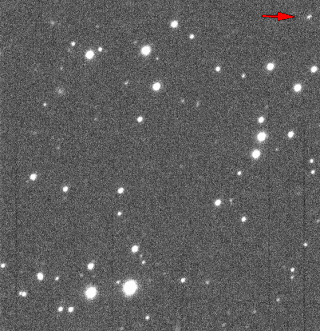
(511002) 2013 MZ5, provisional designation 2013 MZ5, is a sub-kilometer asteroid, classified as a near-Earth object of the Amor group, estimated to measure approximately 300 meters (1,000 feet) in diameter. It was discovered on 18 June 2013, by astronomers with the Pan-STARRS survey at Haleakala Observatory on the island of Maui, Hawaii, in the United States. It was the 10,000th near-Earth object ever discovered.
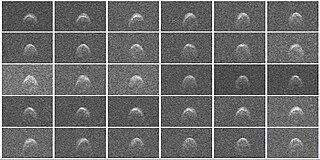
(277475) 2005 WK4, provisional designation 2005 WK4, is a stony, sub-kilometer asteroid, classified as near-Earth object and potentially hazardous asteroid of the Apollo group that passed Earth within 8.2 lunar distances on 8 August 2013. It was discovered on 27 November 2005, by astronomers of the Siding Spring Survey at Siding Spring Observatory, Australia.
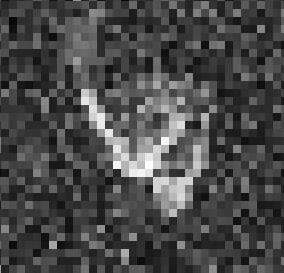
(192642) 1999 RD32, provisional designation: 1999 RD32, is an asteroid and suspected contact binary on an eccentric orbit, classified as a large near-Earth object and potentially hazardous asteroid of the Apollo group, approximately 5 kilometers (3 miles) in diameter. It was discovered on 8 September 1999, at a magnitude of 18, by astronomers of the LINEAR program using its 1-meter telescope at the Lincoln Laboratory's Experimental Test Site near Socorro, New Mexico, United States. The asteroid is likely of carbonaceous composition and has a rotation period of 17.08 hours.
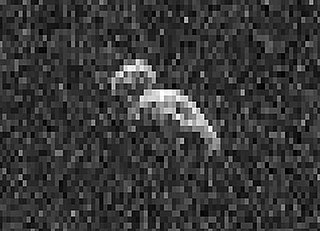
(388188) 2006 DP14, provisional designation 2006 DP14, is a sub-kilometer sized, peanut-shaped asteroid on a highly eccentric orbit, classified as near-Earth object and potentially hazardous asteroid of the Apollo group. This contact binary was discovered on 23 February 2006, by astronomers of the LINEAR program at the Lincoln Laboratory's Experimental Test Site near Socorro, New Mexico, in the United States. On 10 February 2014, it passed 6.25 lunar distances from Earth. The asteroid is approximately 400 meters in diameter and has a rotation period of 5.77 hours.

2014 HQ124 is a sub-kilometer asteroid, classified as near-Earth object and potentially hazardous asteroid of the Aten group, approximately 400 meters (1,300 feet) in diameter. It passed 3.25 lunar distances (LD) from Earth on 8 June 2014. It was discovered on 23 April 2014 by NEOWISE. It is estimated that an impact event would have had the energy equivalent of 2,000 megatons of TNT and would have created a 5 km (3 mi) impact crater. The news media misleadingly nicknamed it The Beast. 2014 HQ124 previously passed this close to Earth in 1952 and will not again until at least 2307. Radar imaging suggests it may be a contact binary.
(523775) 2014 YB35, provisional designation 2014 YB35, is a stony near-Earth object and potentially hazardous asteroid of the Apollo group, approximately 300 meters (980 feet) in diameter. It was discovered on 27 December 2014 by the Catalina Sky Survey at the Catalina Station in Arizona, United States. In March 2015, a minor-planet moon, less than half the size of its primary, was discovered by radar astronomers at Goldstone Observatory. The primary body of the binary system has a rotation period of 3.3 hours, while the secondary's orbital period remains unknown.
2001 AV43 is a very small, monolithic asteroid and fast rotator, classified as a near-Earth object of the Apollo group, approximately 30 meters (98 feet) in diameter. It was first observed on 5 January 2001, by astronomers of the LINEAR program at Lincoln Laboratory's Experimental Test Site near Socorro, New Mexico, in the United States. The presumed S-type asteroid has a rotation period of only 10 minutes. It has an exceptionally low MOID of 0.66 lunar distance (LD) and will approach Earth at 0.81 LD on 11 November 2029.
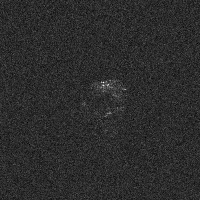
(436724) 2011 UW158, provisionally known as 2011 UW158, is a stony, walnut-shaped asteroid and fast rotator, classified as near-Earth object and potentially hazardous asteroid of the Apollo group, approximately 300 meters in diameter. It was discovered on 25 October 2011, by Pan-STARRS at Haleakala Observatory on the island of Maui, Hawaii, in the United States.

2014 JO25 is a near-Earth asteroid. It was discovered in May 2014 by astronomers at the Catalina Sky Survey near Tucson, Arizona - a project of NASA's NEO (Near Earth Object) Observations Program in collaboration with the University of Arizona.

(190166) 2005 UP156 is a stony asteroid and binary system, classified as near-Earth object of the Apollo group, approximately 1 kilometer in diameter. It was discovered on 31 October 2005, by astronomers of the Spacewatch survey at the Kitt Peak National Observatory in Arizona, United States. Its minor-planet moon with an orbital period of 40.25 hours was discovered in 2017.

(163899) 2003 SD220 is a sub-kilometer asteroid and tumbling slow rotator, classified as near-Earth object and potentially hazardous asteroid of the Aten group, which orbit the Sun between Venus and Earth. Its orbital period of 0.75 years means that it orbits the Sun about 4 times for every 3 of the Earth. It was discovered on 29 September 2003, by astronomers of the Lowell Observatory Near-Earth-Object Search at Anderson Mesa Station near Flagstaff, Arizona.
2013 GM3 is a micro-asteroid, classified as near-Earth object of the Aten group, approximately 20 meters in diameter. It was first observed on 3 April 2013, by astronomers of the Mount Lemmon Survey conducted at the Mount Lemmon Observatory near Tucson, Arizona, United States.

2016 DV1 is a near-Earth asteroid estimated to be roughly 29–65 meters (95–210 feet) in diameter. It is a fast rotating asteroid of the Apollo group which was first observed by the Mount Lemmon Survey on 28 February 2016, just days before it passed Earth at 1 lunar distance (LD) on 3 March 2016. The elongated fast rotator has a rotation period of 303 seconds. It was recovered in February 2021 as it was about to pass Earth on 3 March 2021 at a distance of 0.0053 AU (2.1 LD; 790,000 km; 490,000 mi).
References
- 1 2 3 4 5 6 7 8 "JPL Small-Body Database Browser: (2015 HM10)" (2015-09-06 last obs.). Jet Propulsion Laboratory . Retrieved 17 October 2017.
- 1 2 3 4 5 "2015 HM10". Minor Planet Center. Retrieved 17 October 2017.
- 1 2 3 4 5 6 "LCDB Data for (2015 HM10)". Asteroid Lightcurve Database (LCDB). Retrieved 17 October 2017.
- 1 2 Warner, Brian D.; Ryan, William H. (January 2016). "Lightcurve Analysis of NEA 2015 HM10". The Minor Planet Bulletin. 43 (1): 30–31. Bibcode:2016MPBu...43...30W. ISSN 1052-8091. PMC 7244007 . PMID 32455366.
- 1 2 Thirouin, A.; Moskovitz, N.; Binzel, R. P.; Christensen, E.; DeMeo, F. E.; Person, M. J.; et al. (December 2016). "The Mission Accessible Near-Earth Objects Survey (MANOS): First Photometric Results". The Astronomical Journal. 152 (6): 31. arXiv: 1607.03517 . Bibcode:2016AJ....152..163T. doi: 10.3847/0004-6256/152/6/163 . S2CID 54090944.
- 1 2 National Radio Astronomy Observatory (14 July 2015). "Astronomy summer school radar observations shine new light on near-earth asteroid" . Retrieved 17 October 2017.
- 1 2 3 4 Busch, Michael W.; Benner, Lance A. M.; Naidu, Shantanu P.; Brozovic, Marina; Richardson, James E.; Rivera-Valentin, Edgard G.; et al. (November 2015). "Asteroids With Tensile Strength: The Case of 2015 HM10". American Astronomical Society. 47: 402.05. Bibcode:2015DPS....4740205B.